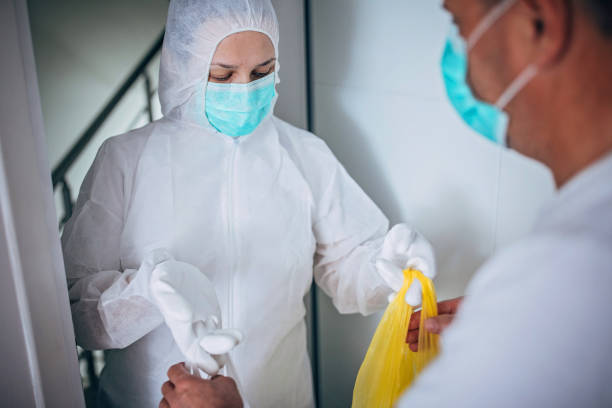Understanding Bone Marrow Donation: A Life-Saving Act
Bone marrow donation stands as a beacon of hope for countless individuals battling life-threatening blood disorders. This noble act of generosity holds the power to offer a second chance at life to those suffering from conditions such as leukemia, lymphoma, and other severe blood diseases. The process, while intricate and demanding, can profoundly impact the lives of recipients and their families. This comprehensive guide explores the significance of bone marrow donation, the process involved, and the profound effects it has on both donors and recipients.
The Significance of Bone Marrow Donation
Bone marrow is a spongy tissue found in the center of bones and plays a crucial role in producing blood cells, including red blood cells, white blood cells, and platelets. When bone marrow fails to produce healthy blood cells due to diseases or conditions like leukemia or aplastic anemia, a bone marrow transplant becomes a vital treatment option. Donating bone marrow is a selfless act that can replace the damaged marrow of a patient with healthy cells, potentially saving their life.
The Process of Becoming a Bone Marrow Donor
Becoming a bone marrow donor involves a multi-step process, starting with registration and ending with the donation itself. The initial step is to join the bone marrow registry, which requires potential donors to provide a sample of their saliva or blood for genetic testing. This sample helps determine if a donor’s tissue type matches that of a patient in need. The matching process is based on specific genetic markers known as human leukocyte antigens (HLAs).
Once a potential donor is identified as a match for a patient, the next step involves a series of medical evaluations to ensure the donor's health and suitability for the procedure. This stage includes a thorough physical examination and blood tests to assess the donor’s overall health and compatibility.
The Donation Process: What to Expect
The donation process can be divided into two primary methods: peripheral blood stem cell (PBSC) donation and bone marrow aspiration. Both methods are effective, and the choice between them depends on various factors, including the recipient’s condition and the donor’s health.
Peripheral Blood Stem Cell Donation: This method involves the donor receiving injections of a medication called granulocyte colony-stimulating factor (G-CSF) for several days leading up to the donation. This medication stimulates the production of stem cells in the bloodstream. On the day of the donation, blood is drawn from one arm, passed through a machine that separates out the stem cells, and then returned to the donor’s body through the other arm. This procedure typically takes a few hours and is performed on an outpatient basis.
Bone Marrow Aspiration: In this method, bone marrow is extracted directly from the donor’s hip bone using a needle. The procedure is performed under anesthesia, so the donor is comfortable and pain-free. After the procedure, donors may experience some soreness in the hip area, but most recover quickly and return to their normal activities within a few days.
Recovery and Aftercare for Donors
Recovery from bone marrow donation varies depending on the method used. For PBSC donation, donors generally experience minimal side effects, such as mild flu-like symptoms from the G-CSF injections. These symptoms usually subside within a few days after the donation. Bone marrow aspiration may involve more noticeable discomfort, including soreness and bruising at the site of the needle insertion. Most donors recover fully within a few weeks and can resume their regular activities with minimal restrictions.
The Impact on Recipients
The impact of receiving a bone marrow transplant can be life-changing for patients. For those suffering from serious blood disorders, a successful transplant can mean remission or a cure, significantly improving their quality of life. The procedure can also offer renewed hope and a chance to return to everyday activities and enjoy life’s simple pleasures.
The Emotional and Psychological Aspects of Donation
Both donors and recipients experience a range of emotions throughout the donation and transplant process. For donors, the decision to give bone marrow often stems from a deep sense of altruism and the desire to make a difference in someone’s life. The process of undergoing medical evaluations and the actual donation can be emotionally charged, but the knowledge that their actions could save a life provides immense satisfaction and fulfillment.
Recipients, on the other hand, navigate a complex emotional journey as they await a match and prepare for the transplant. The process can be fraught with anxiety and hope, as they anticipate the potential for a new lease on life. The successful outcome of a transplant can bring immense relief and joy, as well as a profound sense of gratitude toward the donor.
The Role of Registries and Support Organizations
Bone marrow registries and support organizations play a vital role in facilitating the donation process. These organizations work to recruit potential donors, maintain comprehensive donor databases, and provide support to both donors and recipients throughout the journey. They also engage in public awareness campaigns to educate people about the importance of bone marrow donation and encourage more individuals to join the registry.
By supporting these organizations and participating in their initiatives, individuals can contribute to the ongoing effort to find matches for patients in need and advance the field of bone marrow transplantation.
The Importance of Awareness and Education
Raising awareness about bone marrow donation is crucial for increasing the number of potential donors and improving the chances of finding matches for patients. Education campaigns can help dispel myths and misconceptions about the donation process, highlight the significance of bone marrow donation, and encourage more people to consider becoming donors.
Educational efforts should focus on providing accurate information about the donation process, addressing potential donors’ concerns, and emphasizing the positive impact that donating bone marrow can have on the lives of recipients. By fostering a greater understanding of the donation process and its benefits, we can inspire more individuals to take the step toward becoming donors and making a difference in the lives of others.
Personal Stories and Testimonials
Personal stories and testimonials from donors and recipients offer powerful insights into the impact of bone marrow donation. Hearing firsthand accounts of the experiences of those who have undergone the donation process or received a transplant can be incredibly inspiring and motivating. These stories highlight the profound difference that a single act of generosity can make and underscore the importance of continued support for bone marrow donation efforts.
Sharing these stories through various media channels, including social media, community events, and educational programs, can help raise awareness, build a sense of community, and encourage more people to get involved in the cause.
The Future of Bone Marrow Donation
As medical research and technology continue to advance, the field of bone marrow donation is poised for significant progress. Innovations in transplantation techniques, improved matching methods, and developments in supportive care are enhancing the success rates of bone marrow transplants and reducing the risks associated with the procedure.
Ongoing research efforts aim to expand the donor pool, improve the efficiency of the matching process, and explore alternative sources of stem cells, such as umbilical cord blood. These advancements hold the promise of increasing the availability of suitable matches for patients and further improving the outcomes of bone marrow transplantation.
Conclusion: A Call to Action
Bone marrow donation is a selfless and life-affirming act that has the potential to save lives and bring hope to those in need. By understanding the significance of donation, participating in the process, and supporting awareness and educational efforts, individuals can play a crucial role in advancing this vital cause.
For those considering becoming a bone marrow donor, the journey begins with joining a registry and learning more about the donation process. For those who have already made the decision to donate, your commitment to this noble cause is invaluable and deeply appreciated.
Together, we can work toward a future where every patient in need of a bone marrow transplant has access to a life-saving match, and where the impact of donation continues to resonate through the lives of countless individuals and their families.




